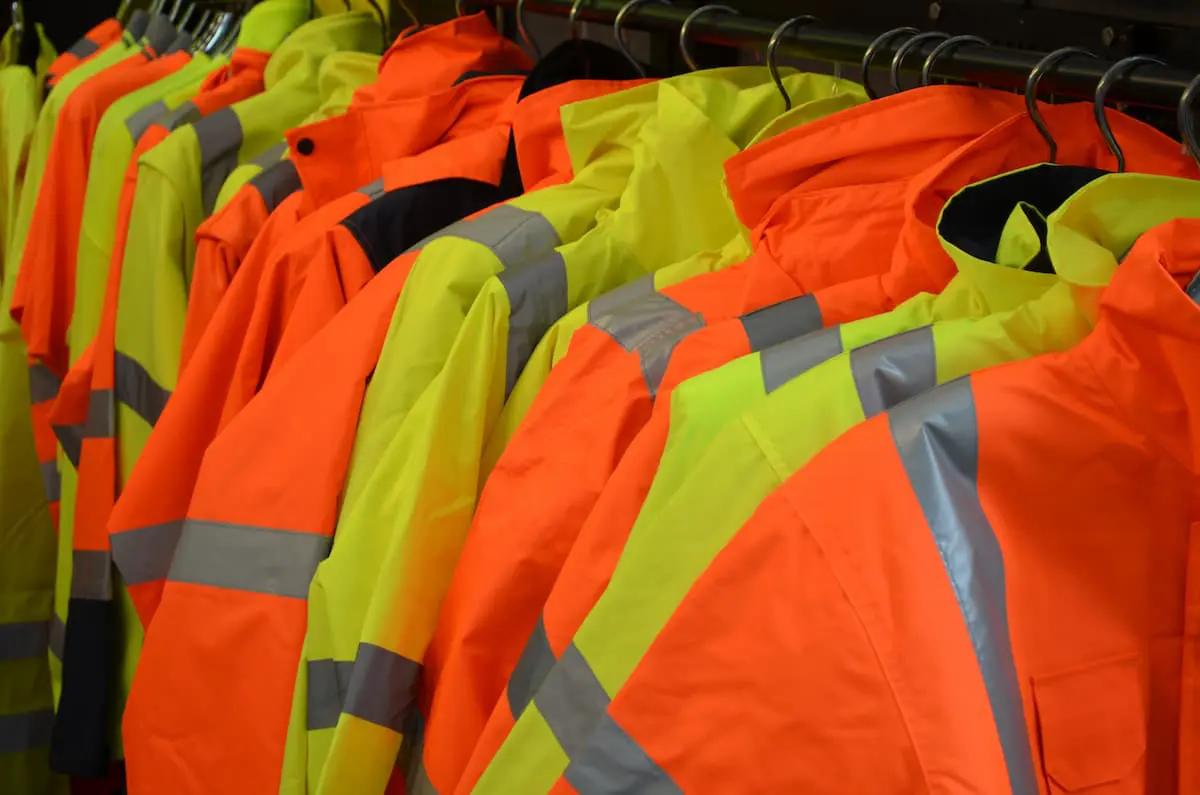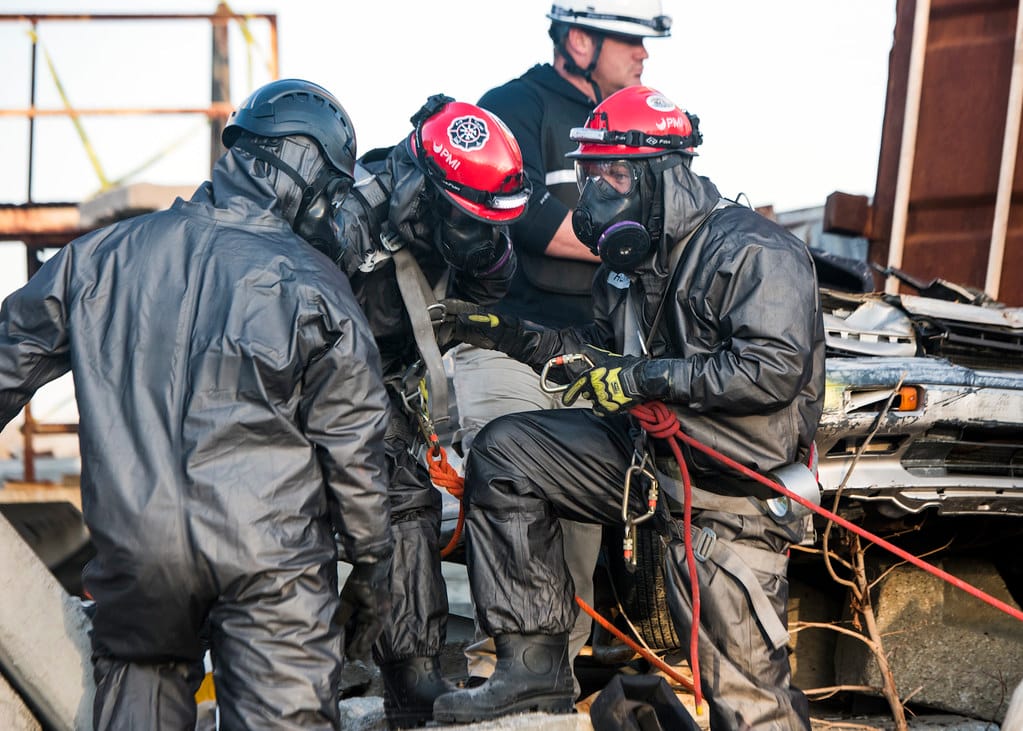
Five years ago, “eco-friendly PPE” was a novelty—something a niche supplier might mention at a trade show, often met with polite nods but little follow-up. Price, lead time, and safety compliance ruled procurement decisions.
Fast-forward to 2025, and sustainability is no longer just a feel-good extra. It’s embedded in tender requirements, written into corporate ESG reports, and increasingly demanded by end users. If you’re a buyer, ignoring eco-standards now means risking lost contracts, reputational damage, and even supply chain disruptions.
I’ve sat in on tender evaluations where two suppliers tied on price and compliance, and the contract went to the one with a Global Recycled Standard (GRS) certificate. I’ve seen mining companies replace perfectly functional PPE because it didn’t meet their sustainability commitments. The rules have changed.
In 2025, PPE buyers face growing sustainability requirements: recycled content, carbon footprint reporting, and eco-friendly packaging. Certifications like GRS, OEKO-TEX, and ISO 14021 not only open more tender opportunities but also help align with corporate ESG targets and secure supply chain priority.
Why Sustainability Is Now a PPE Procurement Factor
1. Tender Requirements
Public sector tenders in Europe, Japan, and parts of the Middle East now routinely include environmental scoring.
- Example: The Netherlands awards up to 20% of tender evaluation points for PPE with verified recycled content or low-carbon production processes.
- Data Point: EU procurement guidelines issued in 2024 encourage all public agencies to include environmental criteria in safety equipment tenders.
- Buyer Impact: Even if your PPE meets safety and pricing requirements, lack of eco-certification can cost you the contract.
2. Corporate ESG Goals
Environmental, Social, and Governance (ESG) commitments are no longer just PR—they’re tied to investor expectations and financing.
- Example: A global logistics company replaced standard safety vests with 50% recycled polyester models, aligning PPE purchasing with its annual sustainability targets.
- Data Point: According to PwC’s 2024 ESG report, 65% of large corporations now have procurement-specific environmental KPIs.
- Buyer Impact: Procurement decisions now involve marketing, investor relations, and compliance teams.
3. End-User Preferences
Sometimes the push for sustainable PPE comes from the people wearing it.
- Example: Municipal waste collectors in Tokyo requested biodegradable gloves to reduce landfill waste from discarded PPE.
- Trend: Outdoor industries (forestry, landscaping, utilities) are adopting eco-friendly PPE to match their environmental branding.
- Buyer Impact: End-user-driven sustainability can lead to niche, high-margin product lines.
4. Supply Chain Pressure
The shift toward sustainable materials is starting at the raw material stage.
- Example: Fabric mills in Taiwan and South Korea now offer recycled yarn as their default, making virgin polyester a special-order product.
- Impact: Suppliers without access to sustainable inputs may find themselves at the back of the production queue.
- Buyer Tip: Secure relationships with mills and component suppliers that have robust eco-material pipelines.
Real-World Buyer Cases
Case #1 – Scandinavian PPE Importer
Won a €1.5M hi-vis jacket tender by offering 35% recycled polyester content, backed by GRS and OEKO-TEX certifications. The tender scoring sheet showed environmental criteria made the difference.Case #2 – Australian Mining Supplier
Switched to low-carbon-footprint safety boots for a client under shareholder pressure to cut emissions. Margins improved as the boots became a premium offering.Case #3 – US Construction Equipment Distributor
Introduced a “green PPE” range featuring biodegradable gloves and recycled-fabric coveralls. Within a year, B2B sales rose 12%, with some customers paying 8–10% more for sustainable products.Case #4 – Japanese Industrial Buyer
Secured an exclusive contract with a municipal utility after proving its helmets and visors were made with recycled polycarbonate and packaged in FSC-certified boxes.
Global Eco-Standards in PPE – 2025 Snapshot
| Region / Market | Key Eco-Criteria | Relevant Certifications | Buyer Impact |
|---|---|---|---|
| EU | Recycled content %, sustainable packaging, low-carbon production | GRS, OEKO-TEX, ISO 14021, Bluesign | Eco-scoring in tenders can outweigh small price differences |
| US | Material transparency, reduced VOC emissions in manufacturing | OEKO-TEX, EPA Safer Choice | Increasingly common in public contracts |
| Japan | Carbon footprint disclosure, biodegradable materials | Eco Mark, ISO 14067 | Often linked to municipal and utility sector contracts |
| Australia/NZ | Recycled content, waste reduction in packaging | GRS, FSC, Australasian Recycling Label | Driven by government sustainability targets |
| Middle East | Limited but growing—focus on sustainable textiles in uniforms | GRS, OEKO-TEX | Early-stage; competitive advantage for early adopters |
Cost & Profit Impact of Eco-Certified PPE
Example: Transitioning a hi-vis jacket line to 50% recycled polyester
| Cost Element | Before | After | Change | Notes |
|---|---|---|---|---|
| Material Cost per Unit | $6.20 | $6.80 | +$0.60 | Recycled yarn premium |
| Certification & Testing (per year) | $0 | $5,000 | +$5,000 | GRS + OEKO-TEX audits |
| Average Selling Price | $12.00 | $13.20 | +$1.20 | Premium pricing in eco-sensitive markets |
| Tender Win Rate | 42% | 56% | +14% | Based on historical data from EU tenders |
| Annual Net Profit Impact | – | +$28,000 | Increased win rate offsets higher material cost |
Supply Chain Adaptation Strategies
-
Eco-Material Sourcing Partnerships
Build direct relationships with mills offering recycled, biodegradable, or low-carbon materials. -
Supplier Eco-Audits
Schedule annual audits to verify sustainability claims, including packaging and waste management. -
Batch-Level Certification Tracking
Maintain documentation linking each shipment to its eco-certification batch. -
Dual-Line Strategy
Keep standard PPE for price-sensitive markets and eco-certified PPE for tenders and ESG-conscious clients.
Risks & Opportunities
| Risk | Mitigation | Opportunity |
|---|---|---|
| Greenwashing from suppliers | Require third-party certification | Build credibility with verified claims |
| Higher raw material costs | Negotiate long-term contracts with eco-material suppliers | Lock in pricing before demand spikes |
| Limited eco-material supply capacity | Diversify sourcing regions | Secure early access to premium materials |
| Regulatory changes introducing new criteria | Monitor standards bodies quarterly | Be first to market with compliant PPE |
Common Procurement Mistakes in Eco-PPE
- Treating Sustainability as Optional – Risk of losing tenders where eco-scoring is significant.
- Assuming All Recycled Materials Perform Equally – Quality varies by supplier; always test.
- Ignoring Packaging Standards – FSC or recycled content in packaging can be part of scoring.
- Overinvesting in Unverified “Green” Products – Without certification, claims can backfire.
Cost-Benefit Snapshot
| Benefit | Annual Gain | Example |
|---|---|---|
| Higher Tender Eligibility | +10–20% win rate | EU municipal contracts |
| Premium Pricing Potential | +8–15% margin | Eco-certified workwear line |
| Brand Reputation Boost | Indirect but long-term | Improved client retention |
| Supply Chain Priority | Avoids shortages | Early access to recycled yarn |
Extended Buyer FAQ
Q1: Is eco-PPE only for developed markets?
A: No—emerging markets with export-oriented industries are adopting eco-standards to meet buyer requirements abroad.
Q2: Can I convert all PPE lines to sustainable versions?
A: Yes, but a phased approach allows for cost control and market testing.
Q3: How long does eco-certification take?
A: 4–12 weeks, depending on product complexity and lab capacity.
Q4: Do eco-standards affect PPE safety compliance?
A: Not if sourced from certified suppliers—safety standards remain mandatory.
Procurement Checklist
- [ ] Map eco-certifications relevant to target markets
- [ ] Identify suppliers with verified sustainable material sources
- [ ] Align eco-PPE portfolio with high-value tenders
- [ ] Implement batch-level certification tracking
- [ ] Audit packaging for compliance with eco-criteria
- [ ] Train procurement and sales teams on eco-benefits
Conclusion
Sustainability in PPE is no longer a nice-to-have—it’s a competitive necessity. Buyers who integrate eco-standards into their procurement strategy can win more tenders, command better margins, and future-proof their supply chains. The key is to move early, verify claims, and align sustainability with core business goals.
📩 Need eco-certified PPE sourcing strategies?
Email: [email protected]
🌐 www.workwearsolutions.net
Zion Zhang
Recent Posts
 Technology in PPE: How Smart Features Are Changing Buyer Expectations2025年8月9日When I first saw a “smart helmet” at an expo in 2018, I […]
Technology in PPE: How Smart Features Are Changing Buyer Expectations2025年8月9日When I first saw a “smart helmet” at an expo in 2018, I […] Post-Pandemic PPE Demand: What Buyers Should Expect in 2025 and Beyond2025年8月9日If you were in PPE procurement during 2020, you probably […]
Post-Pandemic PPE Demand: What Buyers Should Expect in 2025 and Beyond2025年8月9日If you were in PPE procurement during 2020, you probably […] Compliance and Certification Updates: What PPE Buyers Need to Know in 20252025年8月9日If you’ve been in PPE sourcing long enough, you’ve probably […]
Compliance and Certification Updates: What PPE Buyers Need to Know in 20252025年8月9日If you’ve been in PPE sourcing long enough, you’ve probably […] Regional Sourcing Shifts: Where PPE Production is Moving in 20252025年8月9日If you’ve been sourcing PPE for a decade, your mental map […]
Regional Sourcing Shifts: Where PPE Production is Moving in 20252025年8月9日If you’ve been sourcing PPE for a decade, your mental map […] AI in PPE Supply Chains: Smarter Sourcing and Inventory Management2025年8月9日Three years ago, if you had told a PPE buyer that […]
AI in PPE Supply Chains: Smarter Sourcing and Inventory Management2025年8月9日Three years ago, if you had told a PPE buyer that […] From Function to Fashion: How Workwear is Entering the Mainstream2025年8月9日Ten years ago, the idea of wearing a hi-vis jacket or […]
From Function to Fashion: How Workwear is Entering the Mainstream2025年8月9日Ten years ago, the idea of wearing a hi-vis jacket or […]
CONTACT US
- Feel free to contact us any time. We will get back to you as soon as we can!
- +86-17330061805
